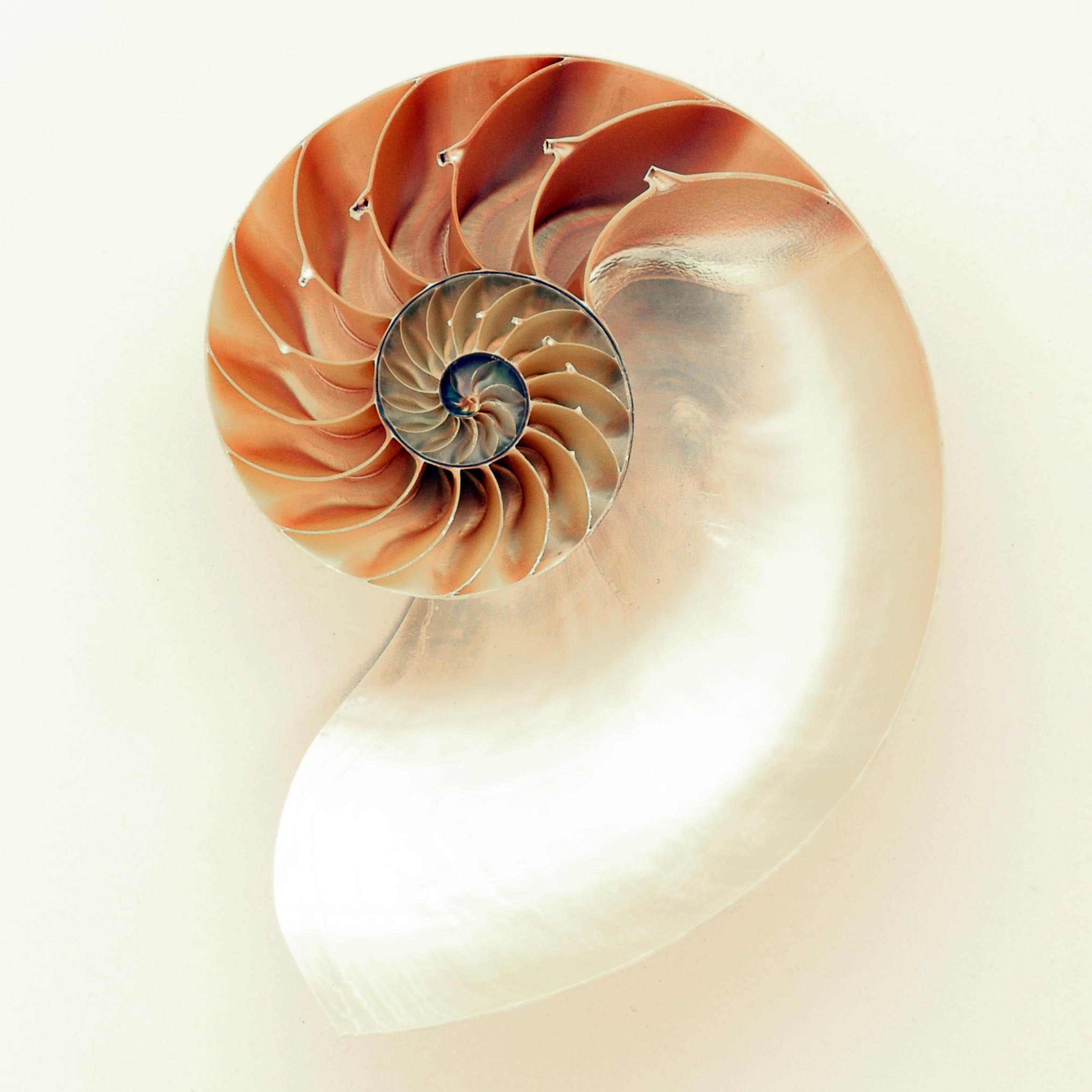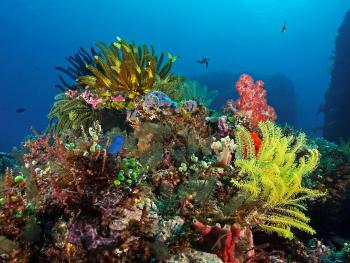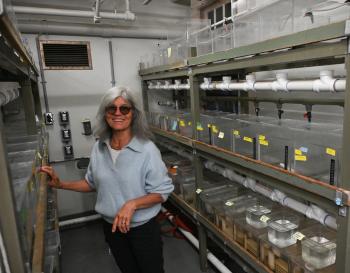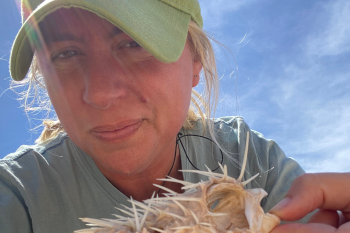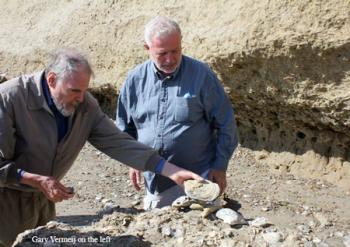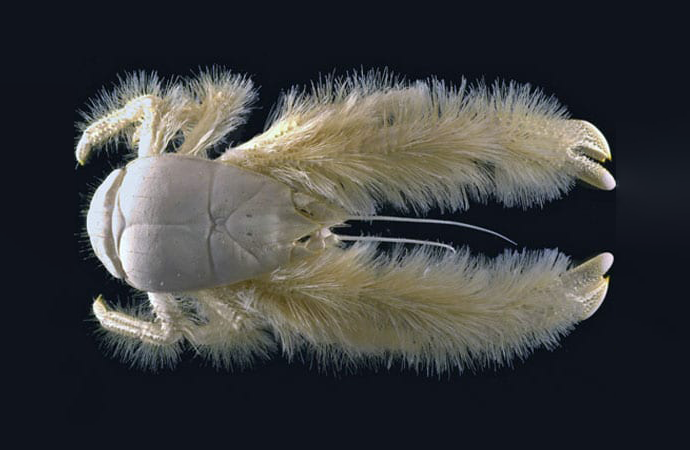
This furry crab lives in deep sea hydrothermal vents. There can be as many as 700 ‘yeti’ crabs in just one meter near hydrothermal vents.
Scientists observed this “furry“ crab living at deep-sea hydrothermal vents in the southeastern Pacific ocean. There can be as many as 700 Yeti crabs in just a square meter near a hydrothermal vent. This blind crab was both a new genus and a new species. Its scientific name is Kiwa hirsuta (Kiwa, a Polynesian goddess of crustaceans; species name from the Latin word for “shaggy” or “bristly”). But the crab has become known as the “Yeti” crab, after the legendary shaggy abominable snowman of the Himalayas.
The crabs aren’t covered in fur, of course, they’re crabs not a mammals. They’re covered in fine bristles. The bristles provide an immense surface area for bacteria to grow on. What are the bacteria doing there? Hydrothermal vents form when hot lava rises up under the seafloor causing Earth’s crust to split apart. The vent fluids carry minerals rich in sulfur and other minerals that the many species of specialized vent bacteria can synthesize. These bacteria support a unique ecosystem of deep-sea animals, including the Yeti crab. Using comb-like mouth parts, the crab harvests the bacteria growing on its bristles, so it has steady source of food.


